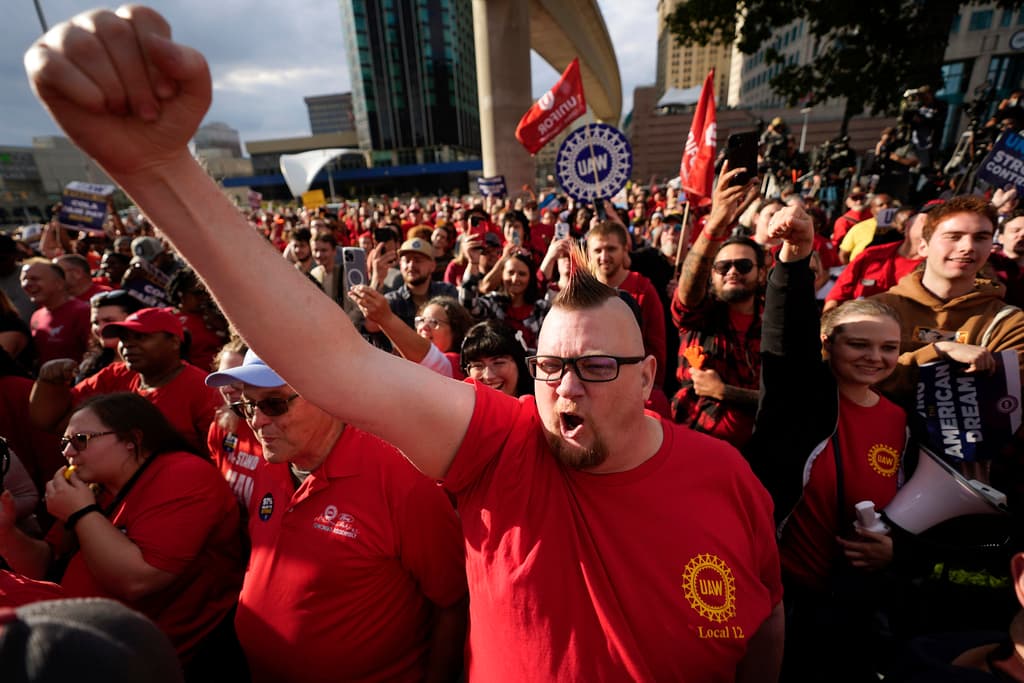Right-Wing Populist Politicians Emerge as a Threat to the Free-Market Economy
This bodes poorly for the economy, as populism has a track record of producing results opposite what their proponents promise.

The political landscape is often portrayed as deeply polarized. The two sides, it is said, can’t agree on anything. Even worse, should one side support a position, that’s reason enough for the other to oppose it. While this picture is largely true for cultural issues, the rise of populism on the right is making some of the two parties’ economic policies remarkably similar. That’s bad news for Americans.
In a new piece for the Unpopulist, Rachel Kleinfeld reminds us that until recently, it was relatively straightforward to categorize economic and political systems. Economically, they ranged from left-wing to right-wing, while politically, they varied from authoritarian to democratic. Most American businesses could easily stake out their position. They generally favored right-leaning economic policies — relatively free markets — which included business-friendly regulations and management-centric approaches.
American businesses didn’t have to worry much about where the country fell on the authoritarian versus democratic spectrum. While cronyism was always a problem, democratic values stayed front and center. That was good for businesses since, as Ms. Kleinfeld notes, they have tended to prosper “most under classically liberal democratic systems that upheld the rule of law and inalienable rights — including property rights.”
The recent emergence of right-wing populism has disrupted this traditional classification. Ms. Kleinfeld writes that today, “even supposedly right-wing populists exploit distrust, pessimism, and anger to make the case that government should wield a heavy — and often retaliatory — hand in markets.” She is right. Let’s examine a few examples where a shift on the right means they now share traditionally left-wing positions on these issues.
Both the populist right and left are protectionist when it comes to trade. While the right advocates for protectionism to support national security, preserve manufacturing, and maintain national sovereignty, the left supports tariffs and other trade restraints to protect laborers’ rights, prevent exploitation in developing countries, and reduce environmental impact. Both sides, if for different reasons, favor trade barriers and are skeptical of free-trade agreements. The best evidence is that President Biden has retained most of President Trump’s tariffs.
Similarly, under the misguided excuse of strengthening our economy, both sides now practice an industrial policy that dispenses massive subsidies, tax credits, and other government-granted corporate privileges. For instance, the Biden administration’s $52 billion in federal tax breaks and subsidies through the Chips Act to prop up the semiconductor industry, including reports of $40 billion — 77 percent of the funds — benefiting giant companies like Intel, GlobalFoundries, Samsung, and TSMC, was passed in a bipartisan way.
Utterly inconsistently, both sides also express serious distrust in megacorporations. The New Right often views large corporations as part of a “global elite” disconnected from the average citizen and influencing government policies for its own benefit. Meanwhile, the left criticizes these entities for their alleged role in increasing income inequality, opposing laborers’ rights, and degrading the environment.
As a result, despite throwing money at big businesses with one hand, both sides are bogging down corporations — especially the ones that successfully earn a lot of customers — with the other hand, stacking up regulations or even threatening to break them up with antitrust cases.
Both the New Right and the left reject talks of fiscal discipline. No side wants to reform entitlement programs like Medicare and Social Security even though these programs are becoming insolvent. Both groups support expensive, often excessive, and politically popular redistribution to families, including rich ones, in the form of paid-leave programs, child care subsidies, or expanded Child Tax Credits.
Another area where the populist right is becoming indistinguishable from the left is support for unions. Traditionally, the right has viewed unions skeptically as helping some employees only by harming others. The New Right, influenced by a focus on the working class, has recently embraced unions as a means of furthering laborers’ rights and raising wages.
This shift bodes poorly for the economy, as populism has a track record of producing results opposite what their proponents promise. As Ms. Kleinfeld put it, “When economists Manuel Funke, Moritz Schularick, and Christoph Trebesch studied populist leaders from 1900 to 2020, they found that … after 15 years, a country led by a populist would have a GDP 10 percent lower than one governed by a non-populist leader” and unfortunately, “modern populists often bask in electoral support.”
While many Americans and commentators are distracted by the apparent political polarization, a significant realignment of sorts is happening among populists. Should it solidify its power, it will be bad news for America’s economy, as well as for our liberties.
Creators.com

